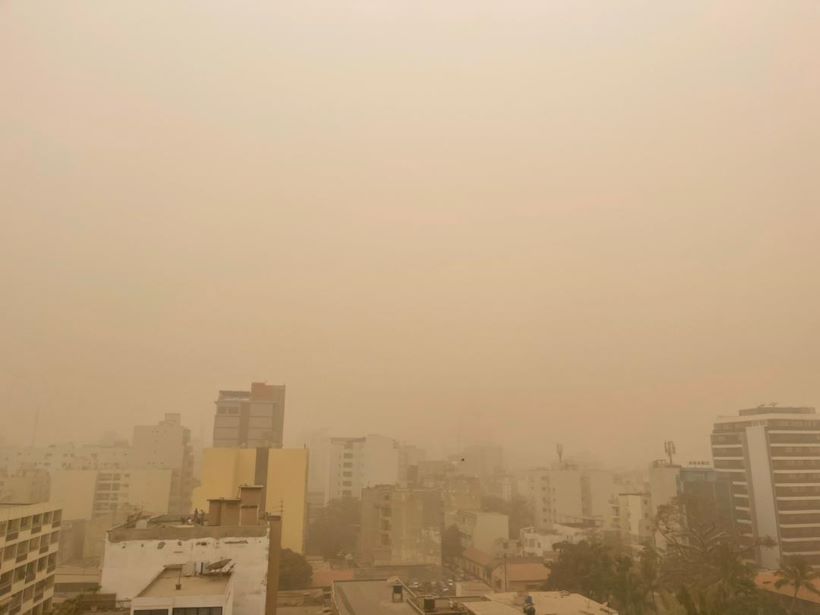Environmental conditions are intimately connected with human health outcomes. The COVID-19 pandemic has brought this into sharp focus. Some countries have plentiful data about their populations to inform resource distribution and policy making. Across the continent of Africa, however, comprehensive data on human health and environmental indicators is generally lacking for a variety of reasons, and results in poorer health outcomes and disjointed health interventions. A new special collection on the connections between COVID-19, environmental and human health across continental Africa seeks new data, research, and analysis to improve our understanding.
COVID-19 in Africa
As of mid-June 2021, there were approximately 5.1 million cases and 136,000 deaths associated with COVID-19 in Africa.
COVID-19 cases first appeared on the continent of Africa during the spring of 2020, with most of the cases occurring north of the Sahara and in South Africa, plus in Ethiopia.
As of mid-June 2021, there were approximately 5.1 million cases and 136,000 deaths associated with COVID-19, with an estimated case-fatality ratio of 2.64 percent, which is only exceeded by the continent of South America.
South Africa has the highest number of cases and fatalities within the continent, with 1.7 million cases and more than 58,000 fatalities. The top five countries in terms of both the number of COVID-19 cases reported and fatalities reported are South Africa, Morocco, Tunisia, Egypt, Ethiopia. Other countries experiencing high cases and fatalities include Kenya, Nigeria, Algeria, Zambia, Sudan, Nigeria, Zimbabwe, Ghana, and South Sudan.
A new wave of COVID-19 first observed in Southern Africa is now spreading across the continent has been linked to the Delta variant.
While the total numbers of COVID-19 cases and fatalities within Africa are considerably lower than in Europe, South America, North America, and Asia, there are reasons to be concerned, which is the motivation behind the call for new research papers for a special collection. These include:
- Low and middle-income countries with growing populations that lack critical health facilities and equipment such as intensive care units, ventilators, and health care staff
- Limited vaccinations have been distributed across the continent and new variants continue to emerge
- The indirect causal connections between COVID-19 cases, spread, and seriousness have been found on other continents but not necessarily in Africa
- Limited in situ environmental data requiring the use of remotely sensed measurements.
COVID-19 and air pollution
When the first cases began to show up in Africa during March 2020, many governments immediately began to partially or fully shut down activities tied to their economies. Consequently, while atmospheric pollution may have been reduced, many individuals with limited income may have become unemployed during the pandemic.
Air pollution is linked to COVID-19 with greater uncertainty in relation to precipitation and temperature.
Our current level of knowledge suggests that air pollution is linked to COVID-19 with greater uncertainty in relation to precipitation and temperature.
In high particulate matter (PM) regions, COVID-19 seriousness and mortality are greater and there is the same dimension of environmental injustice that occurs in communities of color in the United States.
Results also show that COVID-19 transmission (R0) is higher in polluted areas where high long-term exposure to PM2.5 concentrations (composed of sulfate, ammonium, and black carbon) aerosols exceeds healthy standards.
In sub-Saharan Africa, poor air quality occurs at the household level from indoor cooking and heating, at local level from mega-city pollution, and on regional scales from large-scale desert dust and biomass burning during the dry seasons. Aerosols from desert dust are surmised to cause the drive of more premature death relative to biomass burning. During the dry season in West Africa, hazardous dust concentrations are associated with infant mortality, meningitis, and respiratory disease.
A shortage of data and a lack of research
Access to data remains the main obstacle to linking the environment and health in Africa.
Access to health and environmental data remain the main obstacles to linking the environment and health in Africa.
During the COVID-19 pandemic, daily COVID-19 cases have been reported in many countries; however, spatially varying data at higher administrative levels within African countries may not be available.
In addition, some countries show a low number of tests per 100,000 persons leading to potential under-sampling, which could be related to available tests or the expense of testing to many low-income citizens.
The lack of research and operational grade in situ measurements of particulate matter and trace gas pollutants is abysmally low throughout the continent. Hence, the use of satellite observations and low-cost PM sensors has introduced novel ways to examine potential relationships between COVID-19 and the environment.
Special collection on the COVID-19 pandemic and environmental conditions in Africa
A new special collection in the journal GeoHealth entitled The COVID-19 pandemic and environmental conditions in Africa is a call to the community to help explore the various aspects of COVID-19 across continental Africa. It also provides a platform for input from scientists in Africa to contribute from their vantage point and across widely varying cultural and environmental settings.
Papers investigating the links between the environment, COVID-19, and health, in general, in Africa are welcomed. Submissions can include recent developments in modeling and forecasting, monitoring, data analysis, weather, climate and air quality variability, epidemiology and COVID-19 related impacts. Manuscripts should be submitted via the GEMS website for GeoHealth.
—Gregory S. Jenkins ([email protected], ![]() 0000-0002-0753-3964), The Pennsylvania State University, USA
0000-0002-0753-3964), The Pennsylvania State University, USA
Citation:
Jenkins, G. S. (2021), The intersections of environment, health, and COVID-19 in Africa, Eos, 102, https://doi.org/10.1029/2021EO161110. Published on 26 July 2021.
Text © 2021. The authors. CC BY-NC-ND 3.0
Except where otherwise noted, images are subject to copyright. Any reuse without express permission from the copyright owner is prohibited.

